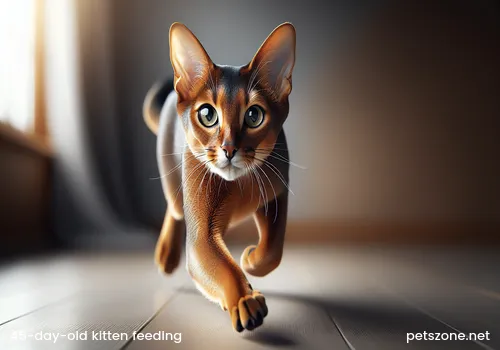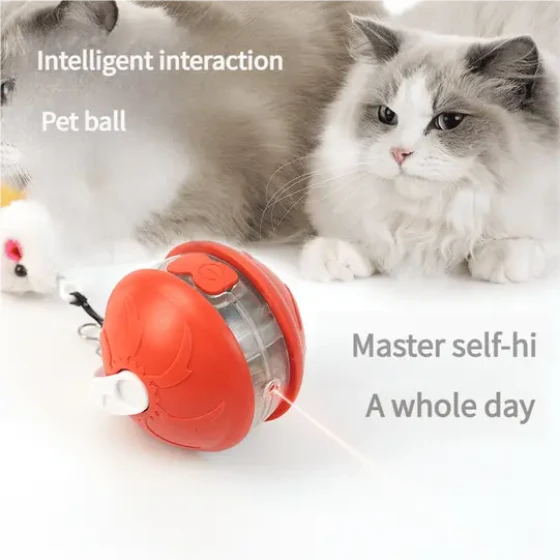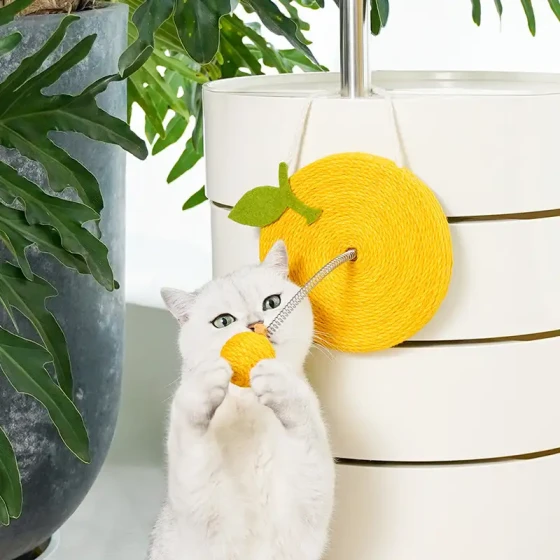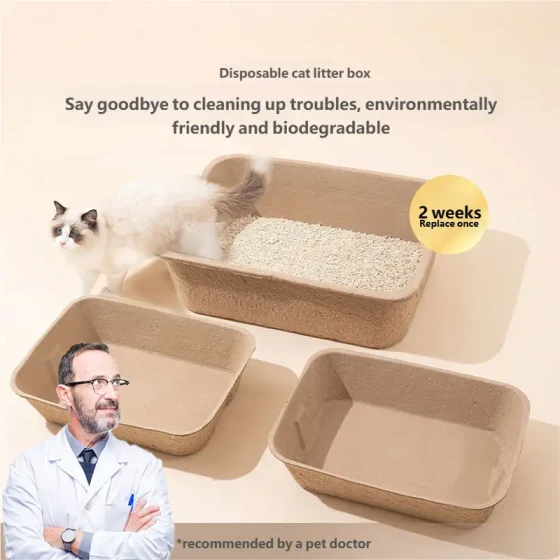Can a 45-day-old kitten eat cat food_Kitten feeding schedule and precautions
When a fluffy, soft 45-day-old kitten comes to your side, you might be full of joy yet a bit confused: Is it so small, can it eat cat food now? The answer is yes. A 45-day-old (about 6.5 weeks) kitten can usually start trying cat food, but remember, this is not about giving dry cat food directly; it requires a gradual process and much careful care. At this stage, kittens are at a critical weaning period, their little bodies like newly blossomed flower buds need scientific and gentle nurturing to grow strong.

45-day-old kittens can eat cat food! But with specifics
At 45 days old, most baby teeth of kittens have begun to erupt, meaning their mouths and digestive systems are gradually preparing for solid food. Although their small teeth are not yet suitable for fully chewing hard dry cat food, their gastrointestinal tract can already adapt to foods other than mother’s milk or formula. Therefore, at this stage, you can start introducing specially formulated wet food for kittens, or dry cat food softened with warm water or kitten formula (also called "milk cake food").
Feeding at this stage is like adding complementary food to human babies; it can’t be done all at once. Food should be made into a paste or semi-solid form for easy licking and digestion by the kitten. This helps them transition smoothly to solid food and avoids digestive issues or choking risks caused by hard food.
Kitten feeding schedule: growth recipes customized by “months age”
From birth to becoming a "cat expert," kittens have different nutritional needs and feeding methods at every stage. Following a scientific feeding schedule is the foundation to ensure their healthy growth.
0-4 weeks old: Mother’s milk is the best food
In the first four weeks after birth, mother’s milk is the ideal food source for kittens. It is rich in antibodies and provides comprehensive nutrition, giving kittens strong immunity to resist diseases. If a kitten loses its mother or the mother’s milk supply is insufficient, professional “kitten-formula milk powder” must be used for artificial feeding. Please remember, never feed kittens cow’s milk or other human dairy products, since most cats are lactose intolerant, drinking milk can easily cause diarrhea, vomiting, and other gastrointestinal problems, which may be very dangerous for fragile kittens. When feeding formula, use a kitten-specific nursing bottle or syringe, control the milk temperature around 38 degrees Celsius to mimic mother’s milk, feed every 2-3 hours, following the principle of small and frequent feeding.
4-8 weeks old: initial solid food experience
Around 4 weeks old, kittens’ baby teeth begin to erupt and their curiosity grows; they start showing interest in their mother’s food. This is the sign to begin weaning.
- 4 weeks old: Try mixing a small amount of kitten wet food or softened kitten dry food (soaked in warm water or formula milk) into the kitten formula, mashed into a paste, letting the kitten first experience the texture of solid food. At first, they may not be used to it; you can dip your finger in a little food to feed them or smear it near their mouth to guide licking.
- 5-6 weeks old: Gradually increase the proportion of wet food or softened dry food, while gradually decreasing the amount of formula. At this time, the food can be made thicker. Feed 4-6 times a day to ensure the kitten gets enough energy. By 45 days old, they should be able to lick these semi-solid foods fairly well.
- 7-8 weeks old: Most kittens at this stage can completely replace formula with kitten food, but it is still recommended to feed dry cat food softened with warm water. Also, be sure to provide ample fresh drinking water so they can drink anytime.
2-4 months: nutrition boost for rapid growth
At this stage, kittens grow very fast and it is a golden period for body development. They need a large amount of high-quality protein and fat to support bones, muscles, and organ development.
- Food choice: Kitten-specific dry and wet food are the main choices. Kitten food usually has over 30% protein and higher calories, fitting their rapid growth needs. You can supplement with some unsalted boiled chicken breast puree or fish puree.
- Feeding frequency: It is recommended to feed 4-5 times a day, in small amounts each time. Although the kitten’s appetite will increase, their stomach capacity is still limited. Small frequent meals help digestion and absorption and avoid gastrointestinal discomfort from overeating.
- Adapting to dry food: If you have been feeding softened food, from this stage start gradually reducing the water amount to let the kitten adapt to chewing dry food.
4-6 months: adaptation of teeth and digestive system
At this stage, kittens’ teeth become stronger, and their digestive system is more mature. They are more adaptable to food.
- Diet structure: Still primarily kitten-specific food, you can increase the proportion of dry food. Also try pairing with kitten-specific freeze-dried snacks to provide extra nutrition and satisfy their chewing needs.
- Observation and adjustment: Closely observe the kitten’s weight gain, mental state, and excretion. Adjust feeding amount based on their activity and growth.
6-12 months: sprint to adulthood
At this period, kittens’ growth slows, and their body shape approaches that of adult cats. They enter puberty and may show some mating behaviors.
- Diet transition: Still focus on kitten food and wet food. Many professional organizations recommend cats eat kitten food until 1 year old because the nutritional ratio is better suited for growth. Switching to adult food too early may cause nutritional deficiency.
- Feeding frequency: Gradually reduce feeding frequency to 2-3 times a day.
- Special needs: If considering neutering, consult a vet for post-neutering diet adjustment advice to prevent obesity.
Kitten feeding “pitfall avoidance guide”: comprehensive precautions
Raising kittens is like a carefully planned “battle”; besides knowing “what to eat,” it is more important to understand “how to eat” and “what not to eat.”
- Choose specialized kitten food and reject “one size fits all”
There are many cat food types on the market, be sure to select those clearly labeled “kitten-specific” or “all life stages.” Kitten food usually features high protein, high calorie, and small kibble size, meeting the energy and chewing needs of rapidly growing kittens. Never feed adult cat food directly to kittens, as the nutritional components and kibble size are not suitable and may cause malnutrition or digestive issues over time.
Tip: Quality cat food ingredient lists should have specific meat sources at the top, not vague "meat by-products" or excessive grains. - Gradual transition, changing food like “warming the frog”
Kittens’ stomachs are very sensitive; sudden food changes can easily cause indigestion, soft stools, or diarrhea. Therefore, when changing cat food brand or transitioning from wet to dry food, use the "seven-day transition method":- Days 1-3: Mix new food with old at a 1:9 ratio.
- Days 4-5: Mix new food with old at a 3:7 ratio.
- Days 6-7: Mix new food with old at a 5:5 ratio, gradually increase the new food percentage until fully replaced.
During this process, closely monitor the kitten’s stool and mental state; slow down transitions if discomfort appears.
- Adequate water for life moisture
Dry cat food contains less moisture, so providing enough fresh drinking water is crucial. Especially for kittens mainly eating dry food, insufficient water can increase urinary system disease risk. Prepare multiple water bowls placed where kittens can easily find them, and change water daily. If kittens dislike water, try a pet water fountain or add extra water to wet food. - Regular portions, no “free feeding”
Though kittens need frequent meals, “all-you-can-eat” is not appropriate. Scheduled and measured feeding helps cultivate good eating habits, control intake to avoid obesity, and lets you notice appetite changes to assess health. Kittens’ stomachs are small; feed multiple meals a day to about “80% full,” meaning the belly feels full but not bloated. - Forbidden foods: harmful “love” to cats
- Milk: As mentioned, lactose intolerance is a common issue in cats.
- Human food: Many human foods are deadly temptations and potential poisons for cats. For example, chocolate, onions, garlic, grapes, and avocado may cause poisoning. Highly seasoned human foods (like salted fish, fried foods) strain cats’ kidneys and digestive system. Even seemingly harmless chicken liver, if used as staple food long-term, may cause vitamin A toxicity or nutritional imbalance.
- Raw meat and raw fish: Unprocessed raw meat and fish may contain parasites or bacteria posing huge challenges to kittens’ immune systems. If feeding, ensure thorough cooking and no seasonings.
- Monitor weight and health, regular check-ups are important
Kittens’ weight is a key indicator of health. Weigh the kitten weekly and record changes. Healthy kittens’ weight should steadily increase. If weight gain slows, stagnates, or other symptoms like lethargy, poor appetite, vomiting, or diarrhea occur, immediately take the kitten to a vet for professional advice. Early detection and intervention greatly improve recovery chances.
Common questions about kittens
Q1: Can a 45-day-old kitten eat dry cat food directly?
A1: Not recommended. At 45 days, kittens' teeth and digestive systems are not fully developed. Eating hard dry food directly can cause chewing difficulties, indigestion, or choking. It is recommended to soften dry food with warm water or kitten formula milk and mash into a paste or semi-solid.
Q2: Can kittens drink milk?
A2: No. Most cats are lactose intolerant; milk causes diarrhea, vomiting, and gastrointestinal discomfort. If kittens need extra milk, choose professional kitten formula or goat milk powder specially suited for cats’ nutritional needs and easier digestion.
Q3: How to judge the feeding amount for kittens?
A3: To judge feeding amount, first refer to the feeding guide on kitten food packaging, which is usually based on age and weight. Then, adjust based on the kitten’s actual condition by observing their mental state, activity, and stool. Healthy kittens should be active with steady weight gain. Follow the small frequent meals principle and feed to about "80% full," avoiding overfeeding. Ask a vet if unsure.
Q4: What to do if a kitten doesn't like cat food?
A4: Try the following:
1. Adjust food texture: Kittens may prefer moist, soft foods. Soften dry food more or offer better-tasting kitten wet food.
2. Increase palatability: Mix small amounts of kitten formula, meat puree, or canned food to enhance attractiveness.
3. Create a quiet, comfortable eating environment: Ensure the kitten feels safe and relaxed during feeding, avoiding noise or sudden disturbance.
4. Be patient in guidance: Some kittens accept new food slowly, requiring patient guidance, such as finger-feeding small amounts.
5. Consult a vet: If the kitten refuses food for long or shows other abnormalities, it may be a health issue requiring prompt veterinary care.
Summary
Caring for a 45-day-old kitten is a sweet burden and a responsibility. Scientific feeding is the cornerstone of their healthy growth. This includes choosing the right food, following a gradual feeding schedule, providing ample water, and avoiding seemingly normal but harmful "forbidden" foods. Every little life is unique; besides general guidelines, carefully observe your kitten and understand their personalized needs. When encountering uncertain problems, don’t hesitate to seek professional veterinary help. With your love, patience, and scientific knowledge, accompany your kitten through this important growth stage and help it become a healthy, happy "cat star"!



